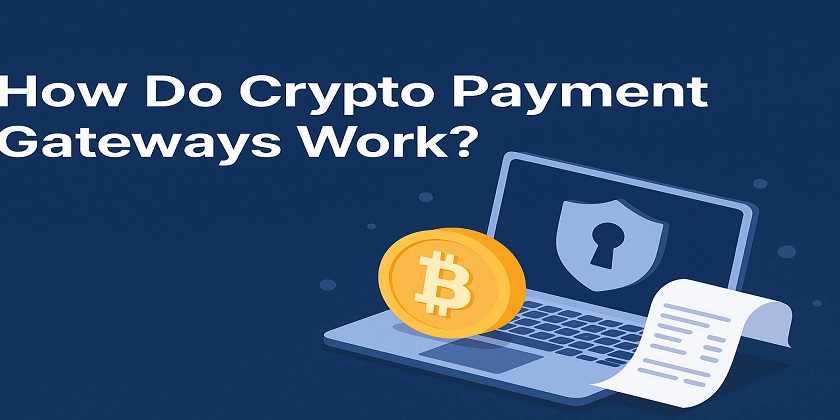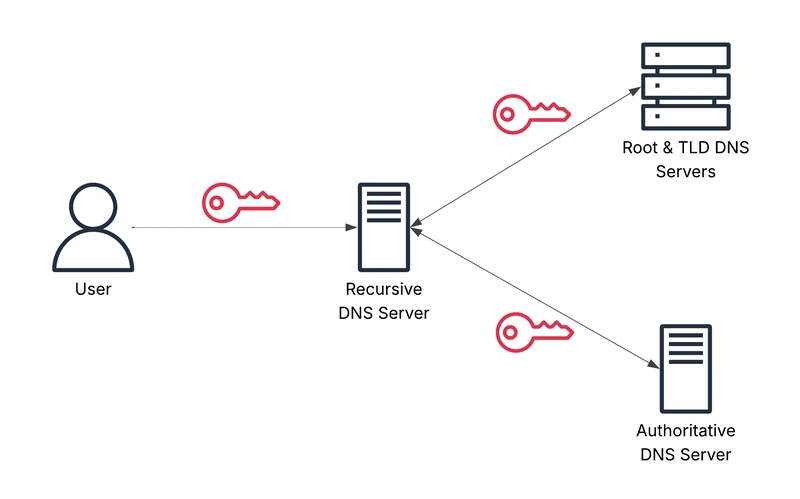Have you ever wondered what actually happens when someone pays with Bitcoin or USDT on a website?
Most developers understand how card payments work through APIs like Stripe or PayPal, but crypto payments follow an entirely different logic, one that runs directly on blockchain networks.
Instead of banks and card issuers, these systems rely on wallet addresses, transaction hashes, and blockchain confirmations. Each payment is public, transparent, and irreversible.
This article explains how a crypto payment gateway{:target=”_blank”} operates from the inside, covering invoice creation, blockchain monitoring, confirmation handling, and callback security. You will also see how gateways like OxaPay simplify the process so developers can integrate payments without managing blockchain nodes themselves.
The Full Crypto Payment Flow
A crypto payment gateway connects three parties: the merchant, the customer, and the blockchain network. The process can be understood as a sequence of six main steps.
Step 1: Merchant creates a payment request
The merchant backend sends an API request to the gateway specifying amount, currency, and callback URL.
`const payload = {
amount: 50,
currency: "USDT",
network: "TRC20",
callback_url: "https://merchant.site/callback"
`};
const response = await fetch("https://api.oxapay.com/v1/invoice", {
method: "POST",
headers: { "Authorization": "Bearer YOUR_API_KEY" },
body: JSON.stringify(payload)
});
const data = await response.json();
console.log("Invoice created:", data);
This response contains a unique invoice ID and a payment address.
Step 2: User sends crypto from their wallet
The customer opens their crypto wallet and transfers the exact amount to the provided address.
Step 3: Gateway monitors the blockchain
The gateway runs a node listener or uses external RPC services to detect incoming transactions. Once a transaction is seen that matches the expected amount, it is queued for confirmation.
Step 4: Confirmation process
Each blockchain has its own confirmation rules. For example:
- Bitcoin requires around 3 to 6 confirmations.
- Ethereum needs roughly 12 confirmations.
- TRON finalizes most transactions within a single block.
The gateway verifies the transaction, ensures it matches the correct invoice, and prevents double spending.
Step 5: Callback and settlement
After successful confirmation, the gateway notifies the merchant system through a secure webhook callback.
{[](url)
"invoice_id": "OXA123456",
"status": "paid",
"txid": "a1b2c3d4...",
"amount": "50.00",
"currency": "USDT",
"network": "TRC20",
"timestamp": "2025-10-24T12:15:00Z",
"signature": "HMAC_SHA256_PAYLOAD"
}
The merchant verifies the signature and updates the order status automatically.
Platforms like OxaPay manage this entire workflow, from crypto invoice generation to secure callbacks, using a single API key and reliable blockchain tracking.
Understanding the Gateway Architecture
A crypto payment gateway consists of three main layers that work together to process transactions efficiently.
1. Application Layer (Merchant Side)
Handles customer orders, UI, and API calls. It creates invoices and processes webhook responses.
2. Gateway Core Layer
This is the engine that creates blockchain addresses, monitors transactions, validates confirmations, and manages settlements. It interacts directly with multiple blockchain networks.
3. Blockchain Layer
The decentralized network itself where transactions are created, verified, and permanently stored.
Simplified Flow
Customer → Merchant Frontend → Merchant Backend → Gateway API → Blockchain → Gateway Confirmation → Merchant Callback
This separation of layers gives gateways high reliability and fault tolerance. Even if a merchant server goes offline, the gateway continues tracking the payment until it is confirmed.
Common Technical Challenges
Address Reuse and Privacy
Reusing the same address for multiple customers exposes payment patterns. To avoid this, modern gateways use dynamic addresses for every invoice or static addresses assigned per user.
Overpayment and Underpayment
Customers sometimes send slightly different amounts because of wallet fees or manual entry errors. Gateways apply tolerance ranges, usually within ±0.5 percent, to automatically resolve these discrepancies.
Exchange Rate Volatility
Because crypto prices change rapidly, gateways lock the fiat value of each invoice for a fixed time window, often 15 minutes.
OxaPay maintains live exchange rates and ensures that customers always pay the exact amount displayed at checkout.
Callback Security
Fake callbacks are a frequent attack vector. To prevent this, gateways include signed payloads verified with HMAC or JWT, ensuring that only legitimate updates are processed.
How Crypto Gateways Compare to Traditional Payment Systems
| Layer | Traditional Gateway | Crypto Gateway |
|---|---|---|
| Transaction medium | Bank or card network | Blockchain network |
| Processing entity | Payment service provider | Gateway nodes |
| Settlement time | 1 to 3 business days | Seconds to minutes |
| Reversibility | Chargebacks possible | Irreversible |
| Transparency | Private logs | Public blockchain |
| Integration | SDK or REST API | REST or Web3 API |
| Access | Region limited | Global access |
| Compliance | KYC mandatory | Optional or flexible |
Traditional systems are limited by geography and financial intermediaries, while crypto gateways allow direct peer-to-peer settlement across the world.
Best Practices for Developers
- Verify all payments on the server, never rely on client-side confirmations.
- Log every transaction, including hash, timestamp, and network.
- Add retry logic for webhook processing in case of downtime.
- Cache exchange rates instead of fetching them repeatedly.
- Support multiple blockchain networks to offer cheaper and faster payment options.
- Use testnets before deploying live integrations.
Following these steps reduces operational risk and improves user experience for both customers and developers.
Why Developers Should Care
Crypto payment gateways are not just financial tools, they are programmable systems that let developers integrate blockchain functionality into any application. They can be used in:
By abstracting blockchain complexity through APIs, developers can build global financial solutions that operate without intermediaries.
Conclusion
A crypto payment gateway bridges modern applications with blockchain networks, combining transparency, automation, and speed.
Developers who understand how these systems operate can design secure, scalable, and decentralized payment flows that move beyond the limitations of banking infrastructure.
For a real-world reference, you can explore OxaPay a developer-focused crypto payment gateway built for security, automation, and global accessibility.



